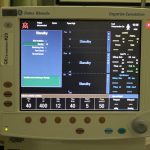That is the title of my latest paper in JMCP with co-authors Jaehong Kim, Shanshan Wang, Moises Marin, Slaven Sikirica, and Mariam Anderson. The study abstract is below.
BACKGROUND:
Patients with type 1 diabetes (T1D) have a greater than 50% lifetime risk of developing comorbid chronic kidney disease (CKD). Glycemic control can reduce diabetes-related complications and slow CKD progression. Adding sotagliflozin to insulin therapy reduced A1c by 0.46% compared with insulin monotherapy in patients with T1D. However, the long-term economic value for patients with both T1D and CKD remains unknown.
OBJECTIVE:
To evaluate the cost-effectiveness of sotagliflozin as an add-on to insulin in patients with T1D and CKD from a US payer perspective.
METHODS:
A Markov model was generated for individuals diagnosed with both T1D and comorbid CKD stage 3 from a US payer’s perspective. Clinical and economic outcomes were assessed over 30 years and included number of patients prevented from dialysis and transplantation, life-years, quality-adjusted life-year (QALY) gains, incremental costs, incremental cost-effectiveness ratio (ICER), and net monetary benefit. Dynamic pricing, through genericization, was incorporated to account for the economic impacts of market entry by generics.
RESULTS:
Sotagliflozin add-on therapy improved survival, extending life expectancy by 1.27 years (13.08 with sotagliflozin vs 11.81 with insulin monotherapy). During the first 10 years after treatment initiation, dialysis and transplant utilization decreased by 3.06 (99.35 vs 102.41) and 1.73 (30.59 vs 32.32) per 1,000 patients, respectively. QALYs per patient increased by 0.63 (7.70 vs 7.07), largely driven by prolonged time in pre–end-stage renal disease health states (0.59; 6.75 vs 6.16). Total costs rose by $72,914 ($484,674 vs $411,760), primarily because of pharmacy costs increasing by $69,060 ($96,242 vs $27,364). The ICER was $115,677 per QALY and the model was most sensitive to pharmacy costs.
CONCLUSIONS:
Sotagliflozin is a cost-effective adjunct to insulin therapy for T1D and CKD patients, providing clinical benefits and falling below the $150,000/QALY willingness-to-pay threshold in 59% of probabilistic sensitivity analysis simulations.
You can read the full paper here.





